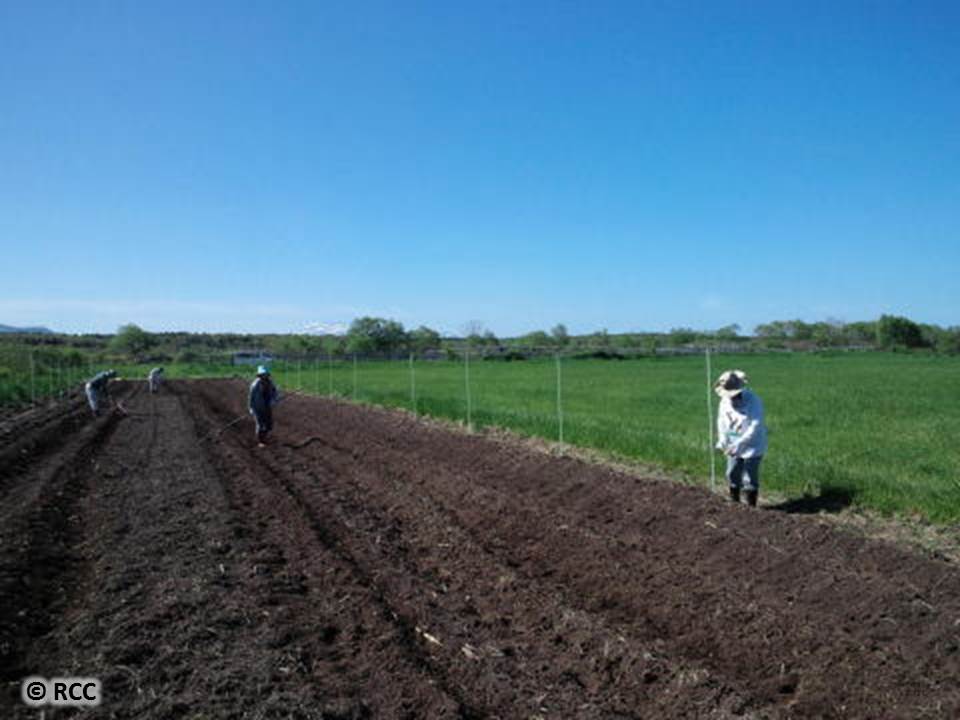
Tawarabashi project
This is one of opportunities for the RCC to realize our vision of creating
a future for both people and cranes. In this ambitious project, we are
planning to restore a large wetland that has been drained for crop production
in the 1980s. We plan to develop the site for education for sustainable
development.
The place
Tawarabashi is located in eastern Hokkaido. It is situated just to the southwest of Shiretoko Peninsula (one of UNESCO`s World Heritage natural sites).
Also, there is an active nest of endangered white-tailed sea-eagles.
Tawarabashi is located in eastern Hokkaido. It is situated just to the southwest of Shiretoko Peninsula (one of UNESCO`s World Heritage natural sites).

Also, there is an active nest of endangered white-tailed sea-eagles.

 The people
The peopleThe project team consists of representatives of local farmers, residents and officials of Nakashibetsu, and the RCC.

The vision
To restore parts of the Tawarabashi area into a functioning wetland. Visitors will be able to enjoy sweeping views of mountains, woodlands with large trees, and the wetland with wildflowers as well as observe large wildlife such as brown bears, sika deer, white-tailed sea-eagles, and red-crowned cranes in their natural habitats. Tawarabashi wetland and the visitor center will become a focal point for education for sustainable development in the region.
To restore parts of the Tawarabashi area into a functioning wetland. Visitors will be able to enjoy sweeping views of mountains, woodlands with large trees, and the wetland with wildflowers as well as observe large wildlife such as brown bears, sika deer, white-tailed sea-eagles, and red-crowned cranes in their natural habitats. Tawarabashi wetland and the visitor center will become a focal point for education for sustainable development in the region.

 Progress report
Progress reportTo encourage red-crowned cranes to stay in the vicinity of Tawarabashi over winter, small amounts of corn are provided.

Some
corn has experimentally been being grown since 2015 in the netted small strip
to protect it from sika deer.
 The field has been maintained by volunteers. The crop is left standing
for the cranes feeding on their own.
The field has been maintained by volunteers. The crop is left standing
for the cranes feeding on their own. Actually, the cranes which have inhabited the area are feeding on corn from the standing crop during winter. We are hoping that creating more of this kind of sites would help the cranes forage on their own during winter periods and disperse further using them as stepping stones.
 Wildflowers
Wildflowersbogbean

flatleaf bladderwort
 a boneset species (white flowers) and a loberia species (blue flowers)
a boneset species (white flowers) and a loberia species (blue flowers)

Labrador tea
タンチョウ保護研究グループタンチョウ保護研究グループ
〒085-0036
北海道釧路市若竹町9-21
TEL 0154-22-1993
FAX 0154-22-1993
Red-crowned Crane Conservancy
9-21 Wakatake-Cho,
Kushiro, Hokkaido 085-0036
JAPAN
TEL +81-154-22-1993
FAX +81-154-22-1993
あなたは
番目の訪問者です。